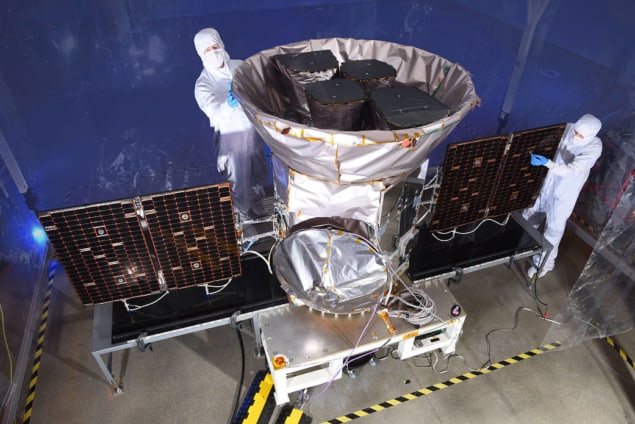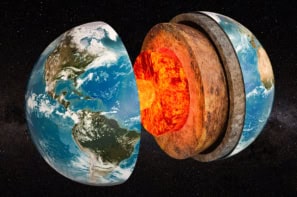
NASA has successfully launched a dedicated exoplanet probe that will aim to discover thousands of planets outside our solar system. Launched yesterday at 18:51 local time from Cape Canaveral Air Force Station in Florida via a SpaceX Falcon 9 rocket, the $337m Transiting Exoplanet Survey Satellite (TESS) will spend about two years surveying 200 000 of the brightest stars to search for planets.
First conceived in 2006, the mission was selected in 2013 as an astrophysics mission in NASA’s “Explorers Program”. TESS, which is 3.9 m long and 1.5 m high with a mass of 350 kg, will feature four identical 16.8 megapixel CCD cameras that each have seven stacked mirrors that help focus the light from distance stars.
The targets TESS finds are going to be fantastic subjects for research for decades to come
Stephen Rinehart, TESS project scientist
It will detect exoplanets via the transiting method, which involves looking for dips in the visible light of from a star as a planet crosses in front of it along our line of sight. By looking at how much light an object blocks, astronomers can get information about the planet’s size and by studying how long it takes a planet to orbit its star, it is possible to determine the shape of the planet’s orbit and how long it takes the planet to circle its sun.
‘A new era’
TESS’s main goal will be to detect nearby small planets that have bright host stars in the solar system so that detailed characterizations of the planets and their atmospheres can then be carried out. This will be mostly performed on existing ground-based instruments as well as with the James Webb Space Telescope when it launches in 2020.
TESS will carry on the work carried out by NASA’s Kepler mission and K2 craft, which together have discovered around 2300 and 300 confirmed exoplanets, respectively, with thousands more waiting for confirmation. While Kepler could spot planets around 300,000 light-years from Earth, it only covers 0.25% of the sky. TESS, however, will be able to see 85% of the sky searching for planets much closer to Earth, up to 300 light-years away.

Europe picks exoplanet mission for launch
“We’re going to be able study individual planets and start talking about the differences between planets,” says Stephen Rinehart, TESS project scientist at NASA’s Goddard Space Flight Center in Maryland. “The targets TESS finds are going to be fantastic subjects for research for decades to come. It’s the beginning of a new era of exoplanet research.”



